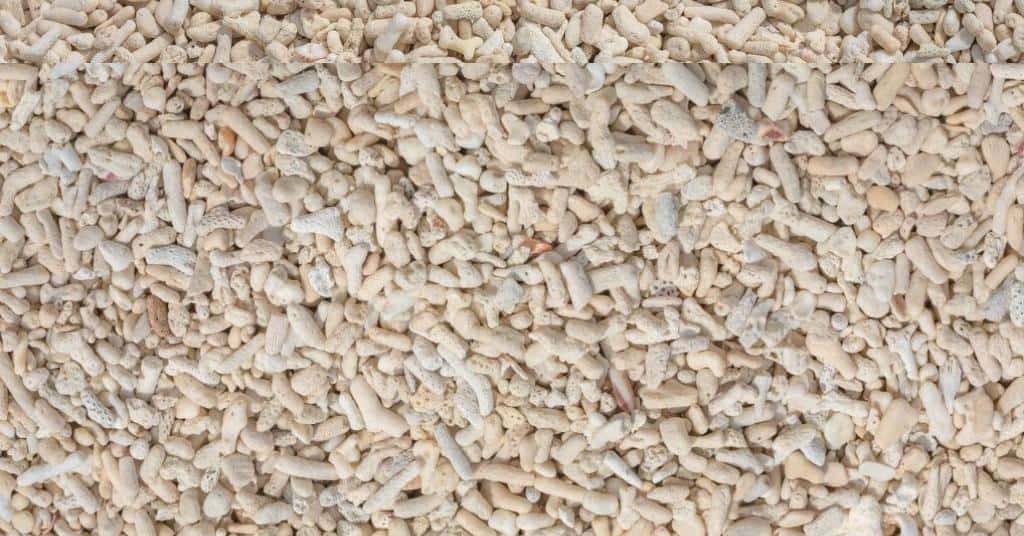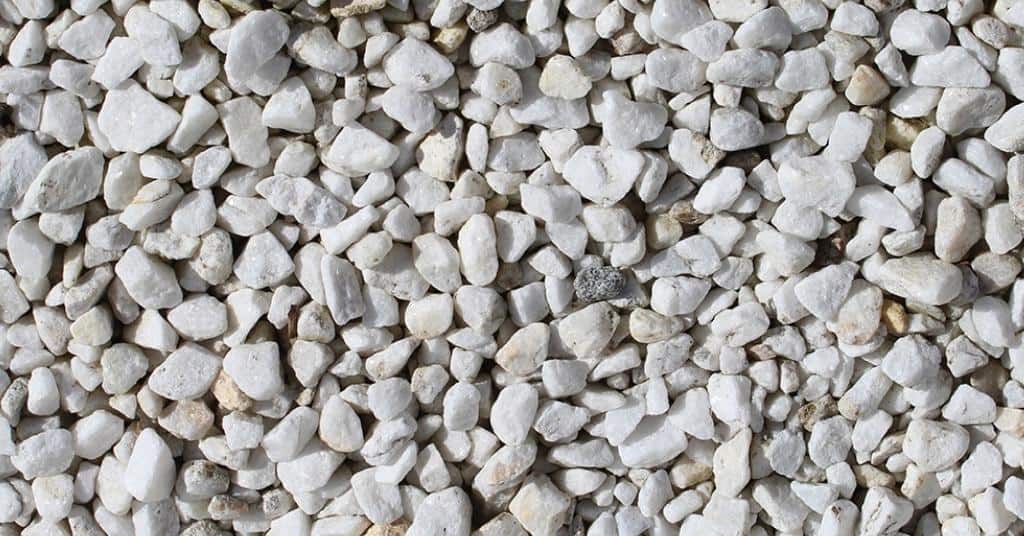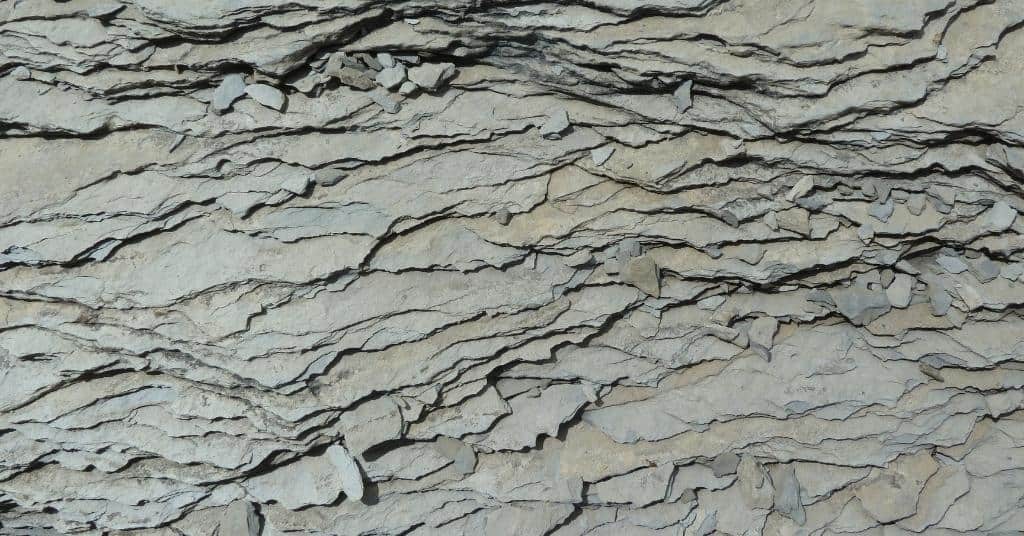Last Updated on August 11, 2022 by cmoarz
Choosing the right substrate for your freshwater aquarium seems like a daunting task when you first start out. And you know what? It is a daunting task even for us experts.
The truth is, choosing a substrate can be as easy or as complicated as you want to make it. If you are trying to get the most out of what you are going to use to benefit your fish and plants the most, then it can be a little more complicated. But if you want to just get something that will look good in your aquarium and not break the bank, then it can be quite easy.
This article will be discussing the former. I want to get into the nitty-gritty of the various different types of substrates you have available to help you decide which one has the best properties for the tank you want to make.

The 3 main types of aquarium substrate
Table of Contents
Not all substrates are made equal and there are definitely pros and cons to each type. More importantly, each type of substrate has its own unique purposes and strengths. It’s important to take these into account when making your decision on which substrate is best for you.
The 3 main “family” categories of substrates are:
Inert Substrates
Inert substrates are your rocks, your colored aquarium gravel, your plastics, and your ceramics. These substrates do not interact with your water chemistry in any way and are considered to be the “safest” (aka useless) substrates you can use.
This lack of interaction is both a strength and a weakness. It’s a strength because you don’t have to worry about these substrates messing with your water parameters. It’s a weakness because, well… they don’t do anything.
These are great for your Way-to-small fish bowls and tend to catch the ‘ooo shiny’ people. But if you’re looking for something that will actually do something for your aquarium, then you’ll want to look elsewhere.
That’s not to say these don’t have their uses in other applications, such as for layering or for providing a solid base for other substrates. They also provide a place for beneficial bacteria to grow, But on their own, they’re not going to do much for you.
Nutrient fortified or rich substrates
These are your substrates that have been mixed with or have had added to them things like peat moss, limestone, and other minerals. The idea behind these substrates is that they will help to lower your pH and provide nutrients for your plants.
While these substrates can be quite effective, they are also very messy and can cause large fluctuations in your water parameters if you don’t know what you’re doing. It’s also possible to overdo them, which can lead to problems like algae growth, pH explosions, etc.
Bioactive substrates
Not all bioactive substrates are rich, but all rich substrates are bioactive. These substrates are alive, or at the very least, have living organisms in them. The most common type of bioactive substrate is live sand (such as reef coral sand), which is sand that has been colonized by beneficial bacteria and other microorganisms.
These types of sand are largely used in saltwater tanks because they help to establish the nitrogen cycle and provide a place for beneficial bacteria to live.
With that said, Most of these live sand products are entirely for saltwater tanks and aren’t used for freshwater. When added to freshwater, the microorganisms, which are suited for saltwater, tend to die off very quickly.
When choosing these, it’s very important to be sure you are getting one formulated for freshwater use, as they tend to be very different.

Every substrate, whether it’s living or inert, has its own “side effects”
Now that you understand the different types of substrates, it’s important to understand that every substrate, no matter what type it is, will have some sort of effect on your aquarium.
Inert substrates, as mentioned before, do not interact with your water chemistry. This means they are safe to use in any aquarium and will not affect your water parameters in any way (assuming they aren’t leeching dye or cheap paint!).
Some gravels and substrates, such as crushed coral, can raise your pH. This is because they are made of limestone, which is a very alkaline substance. If you use one of these substrates, it’s important to be aware that your pH may rise and to adjust your water chemistry accordingly.
Nutrient-rich substrates, as the name implies, are full of nutrients. These nutrients can be great for your plants, but if you use too much or if your aquarium is not set up correctly, they can cause problems like algae growth.
It’s important to note that not all nutrient-rich substrates are created equal. Some substrates, such as laterite, are very rich in iron, which is an essential nutrient for plants.
However, too much iron can lead to problems like algae growth. Depending on the type of fish you have, it could even be poisonous to them, Such as snails and shrimp.
So it’s important to know exactly what each type of substrate does. Here is a list of the most common with their attributed effects:
Laterite – high in iron, good for plant growth

Laterite comes in many shapes and sizes, from small sharp chunks to smooth rounded balls. It’s also known as red clay, fluorite red, hydro clay, and ironstone.
This substrate is very rich in iron, which is an essential nutrient for plants. However, too much iron can lead to problems like algae growth, So it’s important to use this substrate sparingly and to monitor your water parameters closely.
While in most cases it shouldn’t be a problem, Most snails and shrimps, and other invertebrates will not do well in an aquarium with laterite because the high iron content can be poisonous to them.
It might not kill them, but it’s not very comfortable for them to live in.
Laterite on its own is a good substrate, But several brands also add other things to it such as additional nutrients or minerals.
The downside is laterite can be pretty sharp if it’s not been rounded off, So it’s not the best substrate for fish that like to dig, such as barbs and corydoras.
Peat Moss – lowers pH, good for plant growth

Peat moss’s effect on water chemistry is two-fold: it can lower the pH of your water and it can make your water softer.
Peat moss is often used in aquariums that house fish that require a lower pH, such as African cichlids. It’s also a good substrate for plant growth because it’s full of nutrients.
It can act as an additional filter to remove contaminants from your water, and it will help to keep your water clear.
The downside of peat moss is you can easily use too much, which will lower your pH too much, and it can be difficult to remove if you need to.
It can also make a bit of a mess when you first add it to your aquarium as it floats around until it soaks up enough water to sink.
Much like driftwood, it also puts off a lot of tannins, which is the mechanism it uses to lower pH. The side effect of that is it turns your water brown like a cup of tea.
This is not necessarily a bad thing, but it’s something to be aware of. Tannins can be removed fairly easily.
Crushed Coral – raises pH, good for plant growth

A little crushed coral can go a long way in raising your pH. This is because it’s made of limestone, which is a very alkaline substance.
If you use crushed coral as a substrate, it’s important to be aware that your pH will rise and to adjust your water chemistry accordingly.
Crushed coral is also a good substrate for plant growth because it’s rich in calcium and other nutrients.
The downside of crushed coral is it can be very sharp, So it’s not the best substrate for fish that like to dig, such as barbs and corydoras.
It can also be difficult to remove if you need to, so it’s important to use it sparingly. Testing your water several times over a long period and adjusting the amount of crushed coral you use accordingly.
Aragonite – stabilizes pH, good for plant growth

A rough ground-up form of calcium carbonate, aragonite is a popular substrate because it’s very good at stabilizing pH.
It will help to keep your pH from fluctuations, which can be stressful for fish. Aragonite is also rich in calcium and other nutrients, which are good for plant growth.
The downside of aragonite is it’s sharp and rough, it’s also very hard to rinse the dust out prior to adding to your aquarium, which can cloud your water.
Very good for use as filter gravel, such as under gravel filters. Don’t buy too fine a grade if you use it for that purpose.
overall, used more often in saltwater reef tanks for a natural seafloor feel, But can be used in freshwater aquariums as well.
Potting soil – Messy, neutral to pH, good for plant growth

Potting soil is the poor man’s alternative to expensive aquarium plant substrates.
Potting soil is cheap and easy to find, but it can be very messy when you first add it to your aquarium.
it’s usually great for plant growth and root development depending on the type you get, and it’s neutral to pH.
The downside of potting soil is it’s very messy when you first add it to your aquarium, and it can cloud your water. It can also be difficult to remove if you need to. Replanting will be a nightmare as well.
Crushed marble – dissolved in high pH, bad for acidic fish

Crushed marble is a great substrate when you have a neutral pH. It contains calcite which will dissolve in high pH and raise your pH over time.
This is best avoided if you don’t know what to use it for. It’s bad for soft water and acidic water fish.
Crushed Slate – Sharp

Crushes slate is mostly inert and not going to change your pH. The substrate itself is usually very sharp.
This can be good or bad depending on the fish you have. It should not be used when you have bottom dwellers that like to dig such as corydoras or barbs.
It can be difficult to remove if you need to and it’s also easily stained by tannins and other things in your aquarium water.
Specific brands:
Specific brands are often a mix of several different types of substrates with or without added nutrients.
The big names in aquarium substrates are Fluval, Seachem, and CaribSea (and a few more). All of these brands have a variety of substrates to choose from depending on your needs.
If you’re looking for something specific, it’s best to read the reviews, and properties of the substrate and decide which substrate is best for you. There is no one perfect substrate for every aquarium.
Some of these will advertise increasing ph, decreasing ph, ultra plant growth, added nutrients for plants, and so on. As with anything, be sure you know what you are buying before you add it to your tank.
Unfortunately, I can’t cover every type of substrate in this article as it would be way too long. I hope this gives you a good overview of the different types of substrates available and what they’re best used for.
A great source for more substrate types is the various aquarium forum communities where people are always happy to help and share their experiences, such as FishLore, Aquarium Advice, and Fishforums.

Don’t pick a product based on reviews, prices, or brand, choose what you need!
Choosing the right substrate isn’t just about price and brand identity, or what’s on sale. It’s about finding the right product for your aquarium.
If you have a planted tank, you’ll want to choose a substrate that is nutrient-rich and will help your plants grow. If you have a saltwater tank, you’ll want to choose a substrate that is rich in microorganisms and will help establish the nitrogen cycle.
If you have a lot of bottom dwellers, you want a softer rounded substrate so they don’t hurt their bellies. If you want to keep your pH stable, avoid substrates that are known to raise or lower pH.
And finally, if you just want something that looks nice and is easy to care for, choose an inert substrate. It’s important to know what you need before making a purchase!

How to find out exactly what kind of substrate you need for your specific aquarium biome
Ok, you know what these substrates now do, But figuring out what you need can be tricky. The best way to find out is by doing a little research on the internet, or better yet, talking to your local fish store employees.
But learning to do it on your own is always the best way. This way you can be an expert on your own aquarium and figure out exactly what it is you need without having to rely on someone else.
To start, you need to find out what kind of aquarium biome you have or want. Are you keeping fresh or saltwater fish? Plant or no plants? What kind of pH do you need?
If you have fish that need a high pH, then maybe you should consider getting some crushed coral to raise your aquarium’s pH. Get a baseline measurement of your tap water’s default pH and go from there, adding little bits at a time until you reach the correct pH balance for your fish.
If you have fish that need a low pH, then maybe you should get some peat moss to lower your aquarium’s pH. Peat moss will also make your water look more tannic, which can be aesthetically pleasing for some people.
Important note: If you need a specific pH and your tap water is too high or too low, Consider creating a holding tank with the desired substrate inside of it as well so you don’t shock your fish when doing water changes! This could be as simple as a 5-gallon bucket.
And finally, if you’re keeping plants in your aquarium, you’ll want to make sure you have a nutrient-rich substrate like laterite or Fluval. These substrates will help your plants grow and thrive.
Picking the right substrate for your aquarium is a very important decision. It can make the difference between a thriving aquarium and one that struggles. By taking the time to do some research and figure out exactly what you need, you’ll be sure to have a happy and healthy aquarium for years to come.

Our recommendations for depth and layering order of substrate
Once you’ve figured out what you need for your substrate, it’s time to start thinking about depth and layering.
For most aquariums, we recommend a minimum substrate depth of 2-3 inches. This will give your plants enough room to grow and roots to grab onto. It will also help to prevent any issues with anaerobic bacteria buildup.
Our personal recommendation for ideal substrate depth is 6 inches. This is the AG standard as it creates a ton of room for your plant’s roots, and beneficial bacteria colonies, and generally keeps the tank more stable.
Unfortunately, this can often amount to a very expensive setup, so there’s a trick for that – Layering.
In fact, layering has many uses other than just cutting down on the price with fillers. It can establish a much more natural and flexible ecosystem for your fish and plants.
Ultimately, Your layering order depends on what you are trying to accomplish. An example of a good layer that would be bottom dweller friendly but also provide nutrients for plants would be a bottom layer of nutrient-rich substrates, such as Seachem Flourite, Fluval, eco-complete, etc, Followed by a layer of sand topped lightly with rounded porous river stones.
In this way, the sand gives your bottom dwellers a nice place to drag their bellies along or dig around while also weighing down the lighter layer of Fluval or soil so it doesn’t get stirred up as easily.
The stones on top help to give even more places for beneficial bacteria to colonize and also provides a nice place for fry or smaller fish to hide from predators.
Of course, there are many different ways to layer your substrate. It really just depends on what you’re trying to accomplish and what will work best for your aquarium.
There are endless possibilities when it comes to layering, so experiment and find what works best for you!

Mineral and wood decorations also affect water chemistry
Your substrate is half the battle. Depending on your needs, you should also account for any natural decorations you intend on adding to your tank, such as driftwood, dragon stone, limestone, quartz, etc.
If you’ve already got a pH-increasing substrate, for example, it might not be a good idea to also add limestone or dragon stone to the tank as that will further increase the pH.
It’s important to take these into account when planning out your aquarium so that you don’t inadvertently throw off the water chemistry.

Keeping it simple and old school
We didn’t talk about inert substrates very much in this article as there isn’t much to say. But you can actually take an inert substrate and make it somewhat useful by using things like plant tabs and fertilizers.
With a little bit of work, you can actually turn an inert substrate into a pretty decent plant growth medium. It won’t be as good as a nutrient-rich substrate, but it’s a lot better than nothing.
And if you’re really looking to save some money, you can always just use plain old gravel. It’s not the best for plant growth, but it’s certainly better than nothing and it’s very cheap.

Alternative to expensive brands
If you’ve been in the hobby for literally any length of time, You may have noticed that any product labeled “aquarium use” tends to have a pretty high premium on the price.
However, there are actually a lot of products out there that are perfectly safe to use in your aquarium that isn’t marketed as such, and they’re very much cheaper than you would expect. This is very important when you’re trying to get enough substrate to cover a big tank, which if you only purchased “made for aquarium” products, could put you in the whole hundreds or even thousands of dollars.
A great example of a sand substrate would be pool filter sand. It’s very cheap, and it actually works quite well as a plant growth substrate. The same as with play sand used for sandboxes (just be sure to get the stuff with no additives and sifted out debris!).
You can get a 25lbs bag of this stuff for as little as 10$ or less. The same amount of branded sand could cost hundreds of dollars.
Another example would be topsoil. You can actually use regular old topsoil from your local hardware store as a planting medium. It takes a while to settle and you will have to scoop out debris at first, But once you have your plants planted, and maybe even layers with sand on top to help keep it from getting stirred up, it actually works quite well and it’s very cheap.
So when stocking your substrate, don’t feel like you have to spend a fortune on branded products. In many cases, you can find perfectly good alternatives that are much cheaper. Most of them are as simple google search away.
And that’s about it for this article. We hope you found it helpful and informative. As always, if you have any questions or comments, please feel free to leave them below and we’ll do our best to answer them as soon as possible.
Happy fish keeping!
About
Owner of AquariumGravel.com and also owner of actual Aquarium Gravel believe it or not! ;). Setting up beautiful aquarium sceneries and habitats since I was very young. Enjoy!
- Web |
- More Posts(290)

